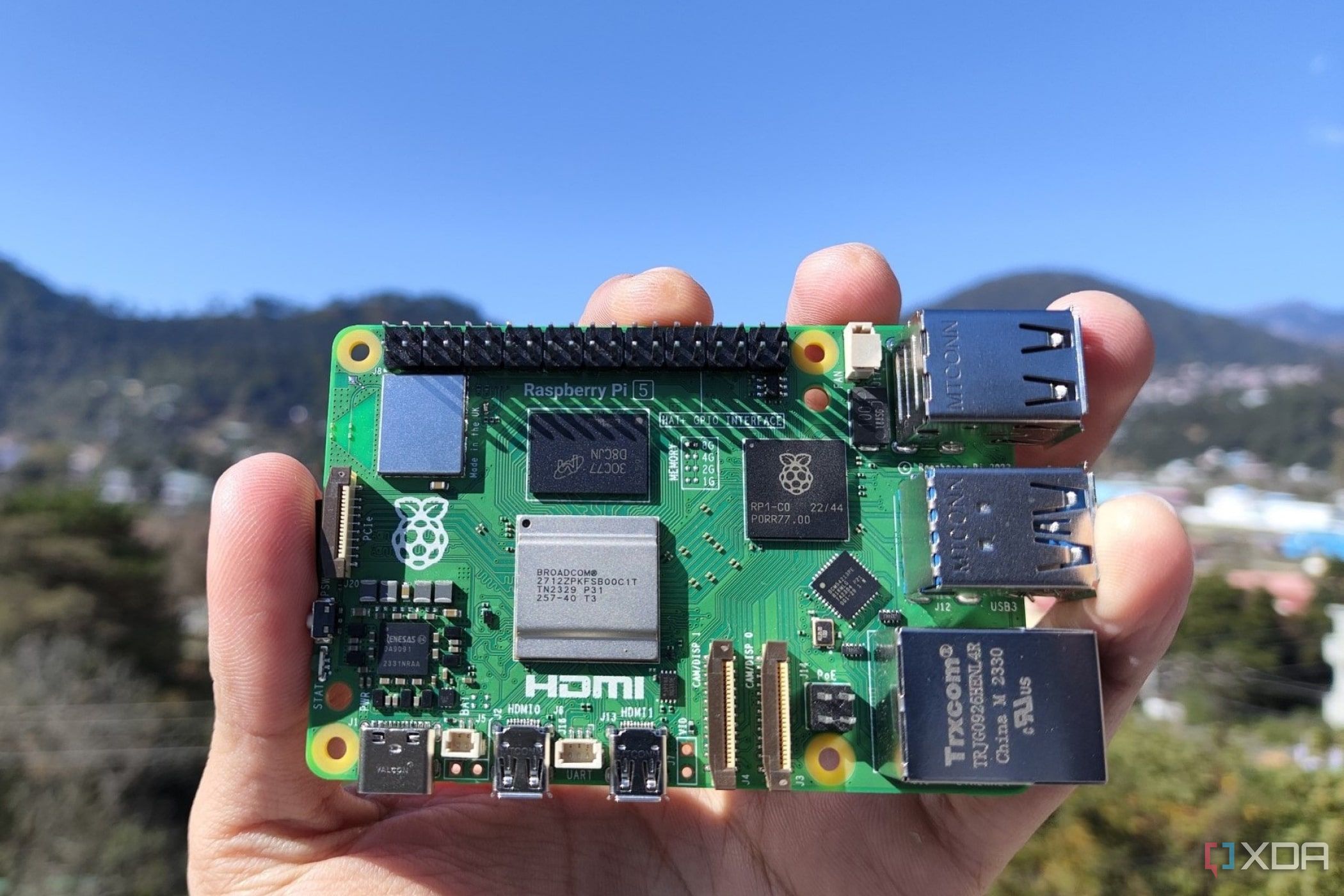Hey there, tech enthusiasts! If you're diving into the world of Raspberry Pi projects, you've probably stumbled upon one of the biggest challenges: accessing your Pi remotely while it's tucked snugly behind a firewall. Now, here's the kicker—what if you don’t want to rely on MAC address filtering? This article is your ultimate guide to mastering this setup. Let’s jump right in and explore how to use a monitor Raspberry Pi behind a firewall without MAC.
Imagine this scenario: you’ve got your Raspberry Pi set up, running scripts, and doing its thing. But you want to keep an eye on it remotely, maybe for security reasons or just to check if everything is running smoothly. The problem? Firewalls can block your access attempts, and using MAC filtering might not always be the most efficient or secure solution. Don’t worry, though—we’ve got your back.
In this guide, we'll break down step by step how you can monitor your Raspberry Pi remotely, ensuring security and efficiency. Whether you're a seasoned pro or just starting out, this article will provide you with actionable insights. Let's get started!
- Aditi Mistry Videos Hot The Truth Behind The Trend
- Aditi Mohosty Hot Live The Phenomenon You Need To Know About
Table of Contents
- Introduction to Raspberry Pi Monitoring
- Why Firewalls Are Necessary
- Why Avoid MAC Filtering?
- Setting Up SSH for Secure Access
- Understanding Port Forwarding
- Using Dynamic DNS
- Essential Tools for Monitoring
- Security Best Practices
- Troubleshooting Common Issues
- Conclusion and Final Tips
Introduction to Raspberry Pi Monitoring
Alright, let’s kick things off with the basics. Monitoring your Raspberry Pi is more than just keeping tabs on its performance. It’s about ensuring that all your scripts, services, and applications are running as expected. Think of it like checking on a remote employee—except this employee doesn’t take coffee breaks.
Now, when you place your Pi behind a firewall, things can get tricky. Firewalls are great for security, but they also act as a barrier for remote access. The traditional solution? MAC address filtering. But here’s the thing—MAC filtering isn’t always foolproof. It can be bypassed, and it adds an extra layer of complexity to your setup. So, how do you monitor your Pi without relying on MAC?
Let’s dive into the solutions. We’ll explore secure methods to access your Pi, discuss tools that make monitoring a breeze, and share some pro tips to keep everything running smoothly. Sound good? Let’s move on!
- Hailey Welch Nud3 A Comprehensive Respectful And Informative Exploration
- Nude Photos Of Stephanie Mcmahon A Closer Look At The Controversy And Misinformation
Why Firewalls Are Necessary
Firewalls are like bouncers at a club—they decide who gets in and who doesn’t. In the world of networking, firewalls protect your devices from unauthorized access, malicious attacks, and other potential threats. For your Raspberry Pi, having a firewall in place is crucial, especially if it’s connected to the internet.
But here’s the catch: firewalls can also block legitimate access attempts. If you’re trying to monitor your Pi from a remote location, the firewall might see your request as suspicious and deny it. That’s why it’s important to configure your firewall correctly, allowing only trusted connections while keeping the bad guys out.
Some key benefits of using a firewall include:
- Enhanced security against unauthorized access.
- Protection from malware and hacking attempts.
- Control over incoming and outgoing traffic.
Types of Firewalls
There are different types of firewalls, each with its own strengths and weaknesses. The most common ones include:
- Hardware Firewalls: These are physical devices that sit between your network and the internet. They’re great for protecting multiple devices at once.
- Software Firewalls: These are programs installed on individual devices. They offer more granular control but require more setup.
Why Avoid MAC Filtering?
MAC filtering is often touted as a simple solution for securing your network. The idea is to allow only devices with specific MAC addresses to connect. Sounds good, right? Well, not so fast. There are a few reasons why MAC filtering might not be the best option:
First off, MAC addresses can be spoofed. This means that a hacker can pretend to be a trusted device by faking its MAC address. Secondly, managing MAC filtering can become cumbersome as your network grows. Adding or removing devices requires manual intervention, which can be time-consuming.
So, what’s the alternative? We’ll explore that next, but for now, just remember—MAC filtering isn’t a silver bullet. It’s better to rely on more secure methods, like SSH and port forwarding.
Setting Up SSH for Secure Access
SSH, or Secure Shell, is your go-to tool for accessing your Raspberry Pi remotely. It provides an encrypted connection, ensuring that your data stays safe while traversing the internet. Setting up SSH on your Pi is pretty straightforward, and we’ll walk you through the process.
Here’s how you do it:
- Enable SSH on your Pi by running the command
sudo raspi-configand selecting the SSH option. - Generate an SSH key pair on your local machine using
ssh-keygen. - Copy your public key to the Pi using
ssh-copy-id pi@your-pi-ip. - Test the connection by running
ssh pi@your-pi-ip.
SSH not only allows you to access your Pi remotely but also provides a secure channel for transferring files and running commands. It’s a must-have tool for any serious Raspberry Pi user.
Benefits of Using SSH
Some of the key advantages of SSH include:
- Encrypted communication for added security.
- Ability to run commands and scripts remotely.
- Support for file transfers using SFTP.
Understanding Port Forwarding
Port forwarding is another essential concept when it comes to accessing your Raspberry Pi behind a firewall. Think of it like giving your Pi a special phone number that only trusted callers can use. By forwarding specific ports to your Pi, you can allow remote access while keeping everything else blocked.
To set up port forwarding, you’ll need to log in to your router’s admin panel and configure the settings. Here’s a quick guide:
- Find your Pi’s local IP address using
hostname -I. - Log in to your router’s admin interface and navigate to the port forwarding section.
- Set up a rule to forward a specific port (e.g., 22 for SSH) to your Pi’s IP address.
Port forwarding can be a bit tricky, especially if you’re new to networking. But once you get the hang of it, it’s a powerful tool for managing remote access.
Security Considerations
While port forwarding is useful, it’s important to use it responsibly. Here are a few tips to keep your setup secure:
- Use strong passwords for your Pi and router.
- Limit port forwarding to only the necessary services.
- Regularly monitor your logs for suspicious activity.
Using Dynamic DNS
Dynamic DNS, or DDNS, is a game-changer when it comes to accessing your Raspberry Pi from the internet. It allows you to assign a domain name to your Pi, even if your IP address changes frequently. This makes it much easier to connect, especially if you don’t have a static IP address.
Setting up DDNS is relatively simple. You’ll need to sign up for a DDNS service (there are plenty of free options available) and configure your router to update the DNS record whenever your IP address changes. Most routers have built-in support for popular DDNS providers, so the process is usually just a few clicks away.
Popular DDNS Services
Some of the most popular DDNS services include:
- No-IP
- duckdns.org
- FreeDNS
Essential Tools for Monitoring
Now that we’ve covered the basics of accessing your Raspberry Pi remotely, let’s talk about some tools that can help you monitor it more effectively. There are tons of options out there, but here are a few of our favorites:
- Grafana: A powerful visualization tool that allows you to create custom dashboards for monitoring your Pi’s performance.
- Prometheus: A monitoring system and time-series database that integrates seamlessly with Grafana.
- htop: A command-line tool for monitoring system resources in real-time.
These tools not only provide insights into your Pi’s performance but also help you identify potential issues before they become major problems.
Security Best Practices
Security should always be a top priority when working with Raspberry Pi. Here are a few best practices to keep your setup safe:
- Use strong, unique passwords for all accounts.
- Keep your software and firmware up to date.
- Disable unnecessary services and ports.
- Regularly back up your data.
By following these practices, you can significantly reduce the risk of unauthorized access and ensure that your Pi stays secure.
Troubleshooting Common Issues
Even with the best setup, things can sometimes go wrong. Here are a few common issues you might encounter and how to fix them:
- Connection Issues: Double-check your port forwarding settings and ensure that your firewall rules are correct.
- Performance Problems: Use monitoring tools to identify bottlenecks and optimize your Pi’s performance.
- Security Alerts: Investigate any suspicious activity in your logs and take immediate action if necessary.
Conclusion and Final Tips
And there you have it—your ultimate guide to using a monitor Raspberry Pi behind a firewall without MAC. By following the steps outlined in this article, you can securely access and monitor your Pi from anywhere in the world. Remember to always prioritize security, keep your tools up to date, and don’t hesitate to reach out if you have any questions.
Before we wrap up, here’s a quick recap of the key points we covered:
- Firewalls are essential for protecting your Pi from unauthorized access.
- MAC filtering isn’t always the best solution—consider using SSH and port forwarding instead.
- Dynamic DNS makes it easier to access your Pi from the internet.
- Monitoring tools like Grafana and Prometheus provide valuable insights into your Pi’s performance.
- Security best practices are crucial for keeping your setup safe.
So, what are you waiting for? Dive into your Raspberry Pi projects with confidence, knowing that you’ve got the knowledge and tools to monitor and secure your setup. Happy hacking, and don’t forget to share your experiences in the comments below!
- Junko Furuta Case Killers Now A Dark Chapter Unveiled
- Aditi Mistri Leak The Truth Behind The Viral Sensation


